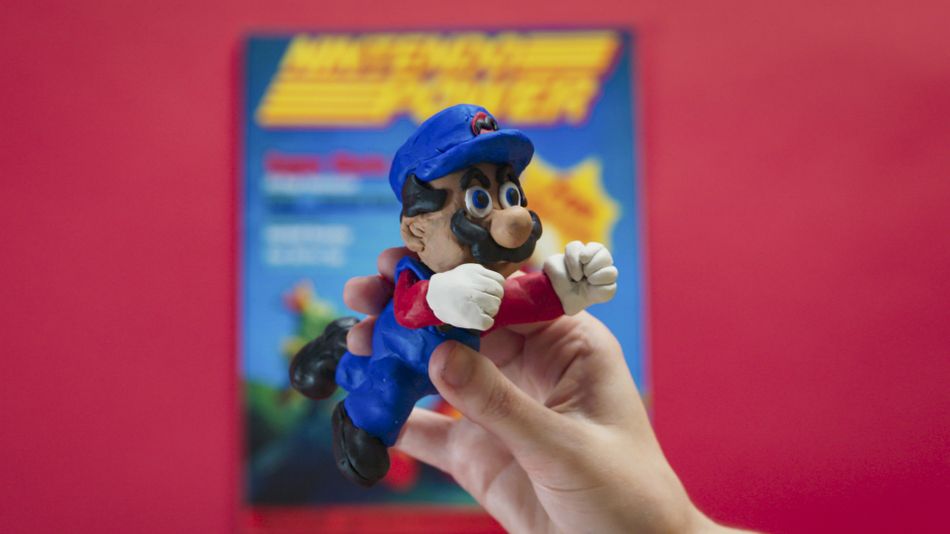I am by no means a gaming expert. I’m the type of person who consistently placed second or third in Fortnite but never won. I played a bunch of Rocket League at the beginning of quarantine but am still pretty average at it. And I tried really hard to win the final battle in Ocarina of Time as a kid, but ultimately gave up because I got bored.
Yet I still like playing video games and am fascinated by the history behind them, which is why Netflix’s new six-episode docuseries, High Score, caught my eye.
This video game exposé tackles the birth of a variety of titles, including Space Invaders, Street Fighter II, Sonic the Hedgehog, Pac-Man, Madden NFL, Mortal Kombat, Final Fantasy, Donkey Kong, and more. It combs through the art that inspired these games and shows us the high-energy competitions where kids played them, the instrumental creators who didn’t get enough credit, and the social and legal controversies born out of the hype.
High Score is incredibly quirky and stylish.
There’s a lot to like about High Score. For starters, the 8-bit-flavored opening theme and its accompanying pixelated graphics are super fun. Like the intro, the rest of High Score is incredibly quirky and stylish. High-quality interviews with game creators like Doom developer John Romero and Sonic the Hedgehog designer Hirokazu Yasuhara are intercut with vintage advertisements, gameplay footage, zany reenactments, and animated sequences. It’s all connected through narration from Charles Martinet, the voice of Mario, Luigi, and other characters in the Nintendo universe.
Though High Score has a lot of retro charm, it’s also incredibly cheesy at times, like in episode 2, when former Nintendo game play counselor Shaun Bloom dramatically puts on a Mario jacket while his clearly fake mullet wig blows in the wind, or in episode 3, when video game developer Richard Garriott cycles through various medieval costumes in order to play Dungeons & Dragons with himself. Sequences like these will have you rolling your eyes like someone just made a dad joke. While this punny humor might not appeal to everyone, it fittingly accompanies the wacky rise of video games.

Lets-a-go!
Image: Netflix
Though High Score‘s episodes can be watched in succession, there’s no clear timeline to the happenings. So if you have a specific gaming interest, you can skip to the episode you’re intrigued by without missing out on any key details. The only problem with that? Not every episode contains stories that mesh well.
For example, episode 2 (my personal favorite) had a lot to say about early Nintendo, from the company’s attempt to market to an American audience to the creation of the famous Nintendo Power magazine — but others, like episode 4, combine a discussion of Sonic the Hedgehog with the creation of Madden NFL games. Though both games made a home for themselves on the Sega Genesis, the juxtaposition of a platform game and a sports series doesn’t flow smoothly.
One of my biggest frustrations with High Score was its pacing.
One of my biggest frustrations with High Score was its pacing. Episode 1 leads with the story of Howard Scott Warshaw, who created the critically panned E.T. the Extra-Terrestrial adventure game for Atari. The episode quickly moves on to discuss making magic through games, and then on to esports, Pac-Man, a Space Invaders competition in New York, the creation of video game cartridges, then the E.T. game again. It’s like the episode is trying so hard to come full circle that it disregards the most logical path to get there. A more linear format would have made the narrative easier to follow.
On the plus side, High Score aims to give voices to those who are underrepresented in the gaming industry, like the female co-creator of Mystery House on the Apple 2, Roberta Williams, and one of the few Black engineers working in video games at the time, Jerry Lawson, who created the first commercial video game cartridge. This is great, but some of these stories are better realized than others. It definitely felt to me at times that while the creators of the documentary were trying to bring light to certain issues or situations, they didn’t have a full grasp on them.
It was bothersome, for example, when designer James Riley made a passing comment about his game Night Trap not playing well with the Me Too movement — and then quickly moved on, with no discussion of why. Though missteps like this one might look small on the surface, they still sit funny, especially because it seems the creators wanted to support marginalized groups. They elevate lesser-heard voices well part of the time, but at other moments, it seems they push this consideration to the side.
In the end, then, is High Score a level-up from the average gaming doc or a clear game over? I’d say, though it’s closer to a win, it doesn’t come without its faults. Despite this, High Score does offer a lot of fast-paced and engaging content as it recounts the history of gaming’s earlier eras. It has its snooze moments, but it also has many fun, nerdy discussions and impressive high-production visuals. While it might not be perfect, its buzzy personality is likely to keep you entertained.
High Score is now streaming on Netflix.
